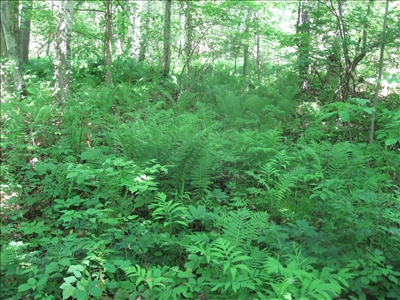Plant Rescues
Plant Rescues Schedule
Currently there are no plant rescues scheduled.
Plant rescues are a last resort to salvage a few vestiges of what is about to be destroyed. They are not a panacea for development. The inter-relationships between plant communities and wildlife are thousands of years in development and cannot be re-created in our backyards merely by transplanting a few species. A plant rescue is not a triumph…it is an admission of failure to protect these habitats.
Plant rescues take away time and energy from conservation activities, and too often leave the incorrect impression that something good has come from development. It is not possible to transplant an entire ecosystem. The biodiversity and genetic variation that existed will inevitably be lost. Long term survival rates of transplanted flora and fauna are not promising.
Whenever possible, work to protect native habitats
- Speak out on behalf of ecosystems. Talk with your municipal representatives about the value of woodlots, prairies, meadows and wetlands. These areas provide enormous social, spiritual, cultural and environmental benefits. Natural areas are essential weapons in the fight against climate change and their value continues long after any “development charges” gained by the municipality have been spent.
- Conduct a plant inventory. See if there are large trees or rare species that may have some legal protection. This is a useful exercise regardless of whether or not you are successful in protecting the area. Cataloguing what existed in an area has historical value in terms of future restoration projects and in setting priorities for rescue efforts should they become necessary.
Undertake plant rescues ONLY when protection measures have failed and the site is due for imminent destruction
Guidelines
- The first step is to contact the developer — they don’t always see what treasures their land holds. If the land owner is uncooperative,another tactic is to go through your local government. Some municipalities tack on interesting restrictions to their development agreements– including the relocation of rare plants and the protection of individual trees or portions of woodlots. Be aware of that even “protected” trees are subject to damage from heavy equipment operating near their roots — ensure that a sufficient zone surrounding each tree is cordoned off.
- Once permission has been obtained to access the property, gather your forces. Check with local conservation groups both for volunteers and for expert advice. That unassuming little plant in the corner might actually be quite an unusual find. Don’t forget to let the locals know of your plans — it cuts down on time-consuming misunderstandings and may well lead to new native plant gardening converts.
- Walk through the site to target priorities for your rescue effort. Agree on a schedule with the developer and set the date(s) for your rescue efforts.
- Prepare an area for your newly uprooted refugees. Try to mimic original growing conditions as closely as possible. Urge your volunteers to do the same for whatever plants they are allowed to keep.
- Alert the local media. The more people you can get out to help, the more plants will be saved.
Suggested equipment includes plenty of plastic bags or trugs (much easier to carry in quantity than buckets and pots), narrow transplanting spades, and hand trowels. Dress appropriately for the weather and the site — rubber boots, rain gear, sun screen, insect repellent (skip that if you intend to handle sensitive creatures such as toads or newts). Remember, a large root ball is not always necessary and can be extremely difficult to transport. Keep the plants moist in a shaded location and transplant as soon as possible.
What to do with the Salvaged Plants
- It is not generally appropriate to sell or use rescued plants for personal gain. If the plants are not going into carefully prepared sites, they likely won’t survive in the long term and your efforts will have been wasted.
- Do not transplant rescued flora into other undisturbed habitats. You may inadvertently upset that areas biological and ecological integrity.
- Be wary of inadvertently moving invasive species and their seeds. If invasives have been observed in the rescue area, it is prudent to advise staff or volunteers at the transplant site so that they can monitor and catch problems early on.
- Restoration projects…areas where the biological integrity of a site is already compromised or essentially non-existent….are good choices for transplant sites. Not only will your plants receive reasonable care but they will help to develop a new habitat.
- Planting into disturbed areas to help stabilize them may also be a good choice.
- It is acceptable to provide rescued plants to ethical plant propagators or for scientific projects. Doing so increases our knowledge base and increases the supply and genetic diversity of ethically grown plants to native plant gardeners.












 The 2023 - 2024 Seedex list is available for viewing at Native Plant Seed Exchange!
The NANPS Seed Exchange is open to all members across the continent and relies on your participation. If you are not yet a member, you may join online now or include your membership form with your seed request....
The 2023 - 2024 Seedex list is available for viewing at Native Plant Seed Exchange!
The NANPS Seed Exchange is open to all members across the continent and relies on your participation. If you are not yet a member, you may join online now or include your membership form with your seed request....